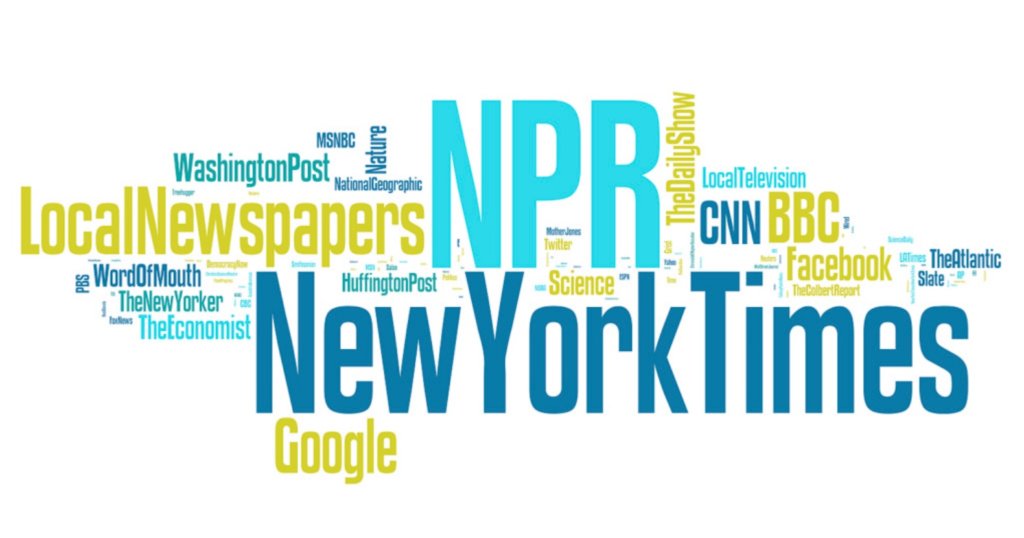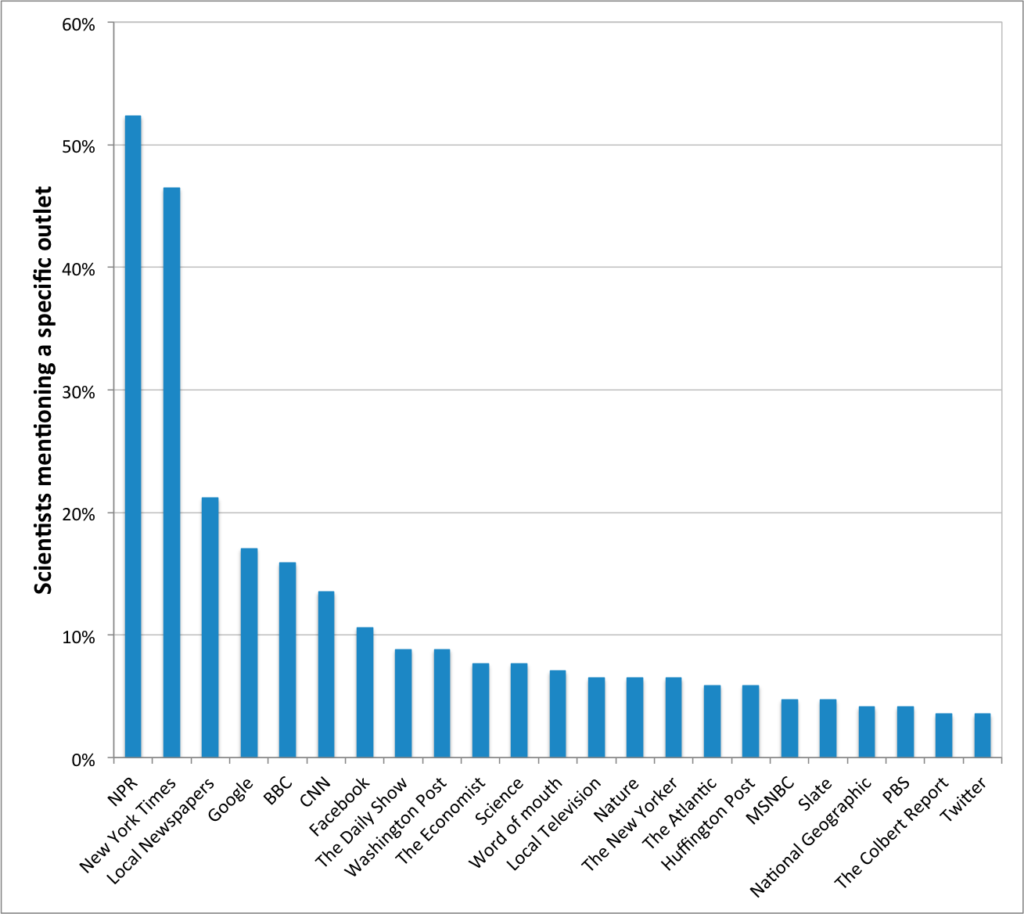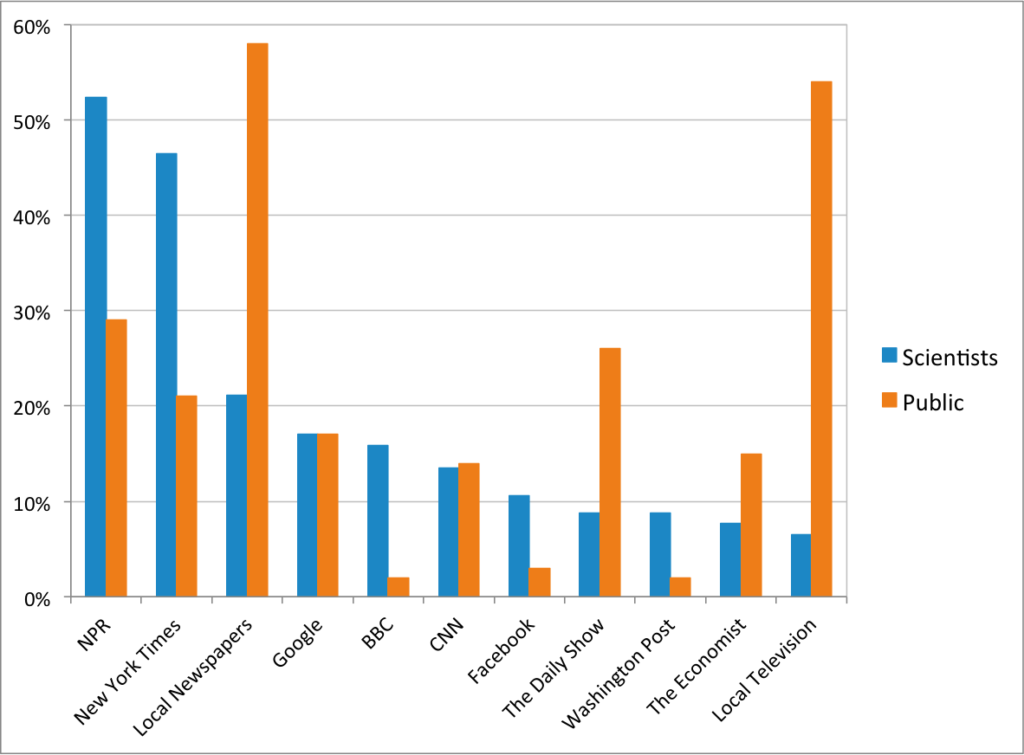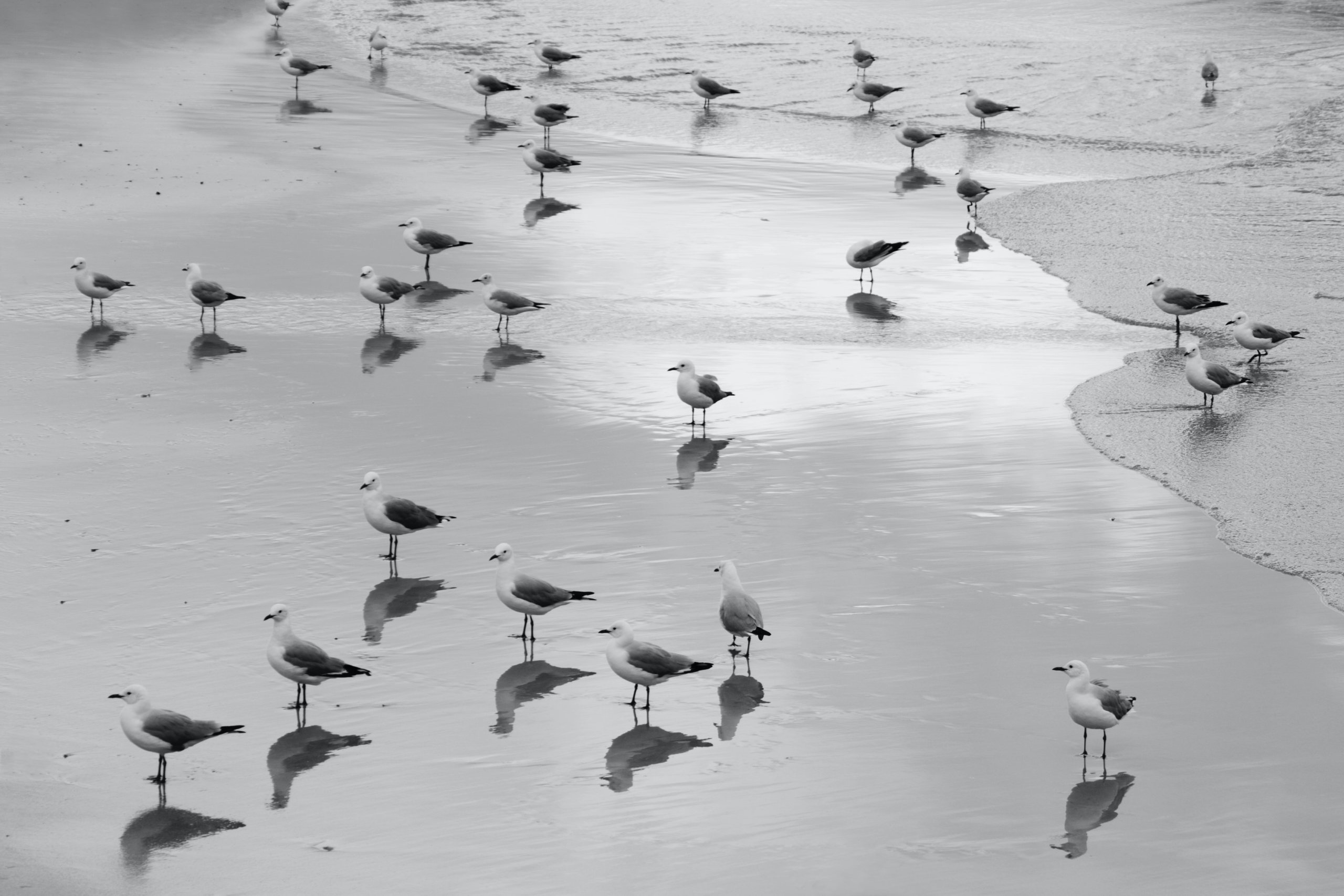COMPASS often asks scientists, “Where do you get your news?” The answers are typicallythe same – they listen to NPR, read the New York Times, and watch theDaily Show.
Fair enough! NPR was the exclusive soundtrack to my years at the lab bench, what about you? This word cloud represents answers from 170 researchers who participated in COMPASS trainings in the U.S. last year. They are a mix of graduate students, postdocs, researchers and faculty, with a strong skew toward biology, ecology, and conservation science. (Note: We’ve collapsed some specific titles into the ‘local newspaper’ bin to better represent the prevalence of those news sources relative to the big national brands.)

All told, the list includes 23 sources mentioned by more than five scientists (graphed here), and more than 100 outlets, total.

This analysis is a terribly rough and unscientific one, but it gets us asking interesting questions. Do U.S. researchers have signature news consumption habits? Does their selectivity narrow their exposure to ideas and content in mass circulation? I suspect the answer is yes.
I’m going to make things even uglier methodologically, but bear with me for the sake of argument. What if we take the 2012 media consumption data from Pew Research for People & the Press, and combine it with our results? In contrast to our short informal survey, Pew has a rigorous list of 100 questions asked via phone interviews and a sample size of 3,003 Americans for 2012. With the upfront admission that we’re comparing apples and oranges, I think it’s pretty clear that there are some sizable differences in how these two groups get their information.

**The poll asks questions about media consumption in a variety of ways. This is the top-level summary (Q 3-5), while the graph shows the combined ‘regularly’ and ‘sometimes’ responses for queries about if participants pay attention to specific outlets (Q 41).
Well, so what? Do researchers have narrow news consumption habits and/or substantially different preferences than the average American? And, if so, does it matter? I think it does. Of course, we all have trusted news sources that we regularly go to, and to some degree, this is a reflection of our search for quality. But unfortunately, familiar and trusted sources all too often translate into a diet of comfortable, familiar perspectives that reinforce existing worldviews.
This can mean that over time, we can lose context and perspective. This feels particularly important when we know audiences are increasingly polarized, and further, that news outlets are increasingly driven to cater to audience taste. It’s a significant problem if our knowledge of current events and discussion is the same as all of our friends and coworkers.
When we lack data on the conversations, concerns, and perspectives of those outside our bubbles, then our group inclinations are exacerbated. It becomes easier to demonize others; easier to dismiss or even despise those we are not talking with, but rather talking about, most of the time. We might believe in ‘engaging in dialogue’ or ‘informing public discussion,’ but how can we constructively argue if we do not actually know what we’re arguing against? Posturing in the echo chamber may feel good, but I doubt it accomplishes anything else, and I believe it can hurt deliberative processes.
As we grapple with more and more complex social and political decisions, can we afford to wear blinders? If we desire civil discourse – and a role for science in decision making – isn’t the first step to just be fully present? We should be consumers and customers of a variety of news sources, and engage in difficult discussions, rather than walling ourselves off.
If you recognize yourself as living in news bubble, how might you change your habits? As much as I’d simply like to say “read more broadly!” given all of our deadlines and workloads, we know how likely that is. So I challenge you to treat this like an experiment.
1. Gather your own data: Try out a browser plug-in like Balancer to track the political slant of your reading history. This research project out of the University of Michigan is part of an NSF-funded project on computer-mediated news and opinion aggregation. If your track record is skewed, Balancer can make suggestions for how you can expose yourself to a broader range of perspectives.
2. Consider the source: Become a critical consumer. Think about what you’re reading and where it comes from. Are there other places you can go to get a different perspective? This doesn’t have to be a radical or unpleasant change. If your default is the New York Times, try Al-Jazeera or The Guardian for a week.
3. Make contact: In small doses, try focused exploration of news from sources that you’ve previously dismissed. Challenge your own assumptions. If your instinct is to laugh or get angry, treat this as data collection. Listen harder than you argue. Take the time to learn about the knowledge and values behind arguments that oppose your own beliefs. Consider commenting on sites with perspectives very different from your own. You might learn something and others might learn from your perspective as well.
I’m going to be undertaking these three steps myself over the course of the next three weeks. I’ll report back here with any interesting insight. I have no idea how that will go – I feel like it’s part adventure, part self-improvement project – both entertaining to anticipate and something I’m dreading a little. What do you think? Join me in pursuing a more omnivorous media diet… as my mom always said, “You don’t have to like it, but don’t tell me you don’t like it until you try it.”


